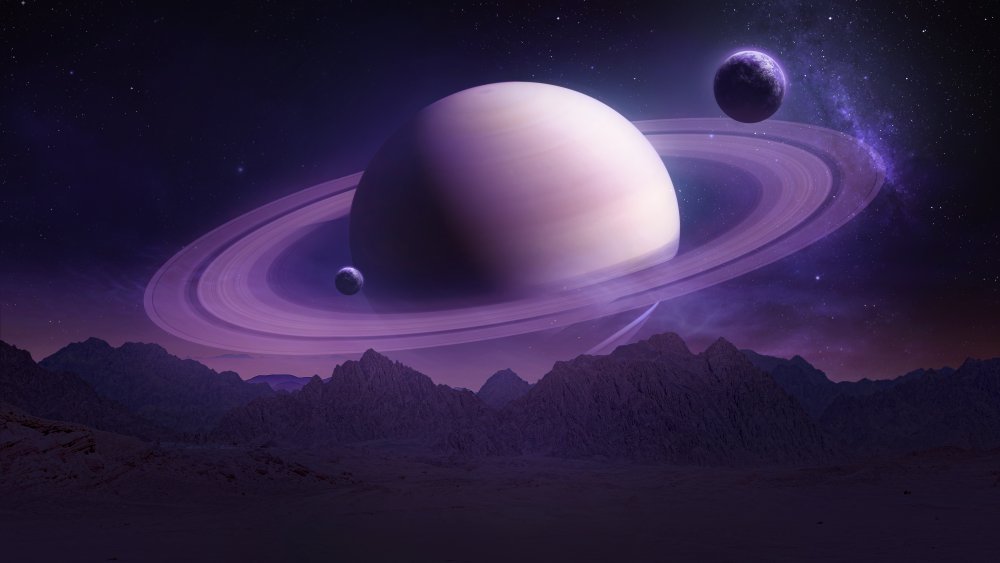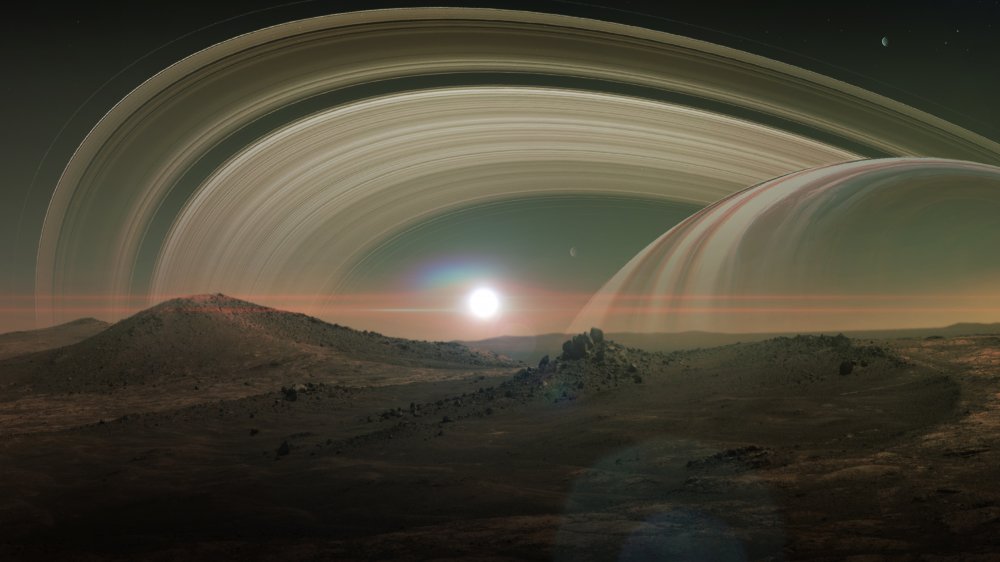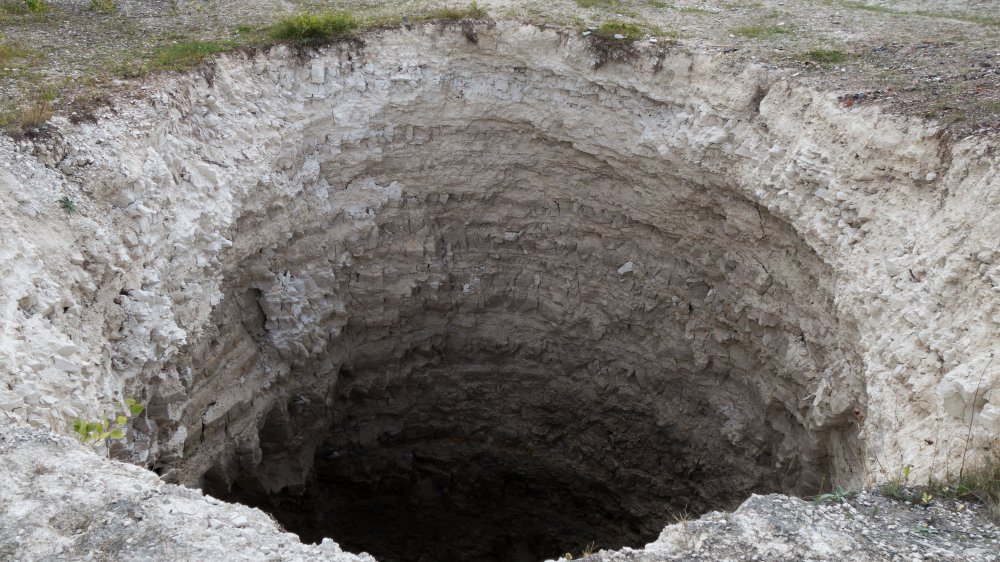Saturn's Moon Has Sinkholes. Here's How That's Possible
Sinkholes are equal parts frightening and fascinating. Sometimes, they can appear out of nowhere and swallow cars whole. Everything that we know of sinkholes comes from observing sinkholes here on Earth, particularly in areas where humans have built cities in places with rocks prone to erosion. It turns out that some sinkholes are more extraterrestrial than we thought. Scientists now believe the mysterious lakes discovered on Saturn's moon Titan could be sinkholes, revealed NASA's Jet Propulsion Laboratory.
A refresher on sinkholes: According to the U.S. Geological Survey, sinkholes happen when rainwater stays inside the ground with no external drainage. Groundwater underneath mineral deposits such as limestone, carbonate rock, and salt beds slowly dissolves the rock, creating caverns. Eventually, the land above collapses and boom! Sinkhole. There are different kinds of sinkholes, but they all involve groundwater eating at the rock. Some sinkholes can also be caused by humans when groundwater is pumped for construction, or water-diversion systems are built.
Sinkholes are common in places like Florida, Texas, Alabama, Missouri, Kentucky, Tennessee, and Pennsylvania, but other areas of the United States can be susceptible too. On Earth, sinkholes can be highly destructive. They can open up and swallow houses. Some sinkholes have also developed on roads, often just creating potholes, but sometimes cars have fallen onto sinkhole-made pits. What scientists didn't know, however, is that sinkholes could also happen on other planets. Or, you know, other moons.
They turned to Earth to figure things out
When the first images arrived from satellites orbiting Saturn and its moons, scientists saw lakes and seas on Titan, Saturn's largest moon. Before the satellites could take a closer look at the moons, people thought Titan was just as gaseous as Saturn. But the photos from the satellite Cassini told a strange story that created quite a stir — because it's the only other body in the solar system that's been found with unfrozen liquid, wrote EarthSky. Titan doesn't have water; the lakes and seas are actually filled with liquid hydrocarbons or gas. (If it was filled with water, Titan could be a good place to start looking for alien life, since water is kind of a prerequisite for that)
Scientists want to figure out how these lakes and seas came about. Smithsonian Magazine explained Titan's lakes were formed via depressions on the surface that change depth but are not connected to another body of liquid, unlike Earth's lakes, which usually feed off a river. Researchers saw the depressions were mostly located in flatter areas with no rivers of hydrocarbons flowing to them. They figured that to find out how these depressions occurred, they could look at similar features in the one place they know best: Earth.
It takes considerably longer to form
They figure the depressions where Titan's lake forms could be karstic landforms — another name for sinkholes and caves. Scientists think the depressions could have also been caused by erosion underneath the moon's surface. But, because Titan's surface, rate of rainfall, and chemical composition are vastly different from those of Earth, they think these sinkholes could've formed dissimilarly.
Based on data from NASA and the European Space Agency, scientists estimated how long it took for these karstic landforms and lakes to form on Titan's surface, said NASA's Jet Propulsion Laboratory. Assuming Titan's surface is covered in solid material, and the dissolving liquid is hydrocarbons, it could take around 50 million years for a 300-foot depression. That's on Titan's rainier areas, around its poles. Compare that with the short amount of time it takes for a sinkhole to grow on Earth.
Researchers believe sinkholes take longer to form there because Titan's years are longer than on Earth. With a longer year and a rainy season that only happens during summer, it will take 30 times longer for enough groundwater to accumulate from rainfall. Taking into consideration the lower-lying planes of Titan, where it doesn't rain as much, a sinkhole needs 375 million years to form. While the process takes much, much longer than on Earth, Saturn does have its own sinkholes. Sure, they aren't as dramatic as Earth's, but if aliens really did exist on Titan, maybe their cars have been swallowed by sinkholes, too.


